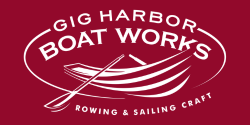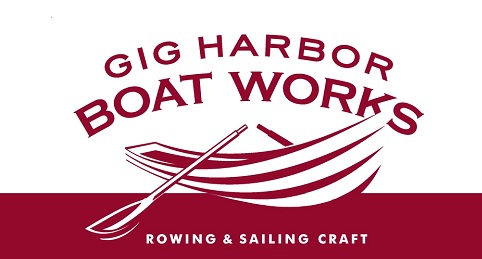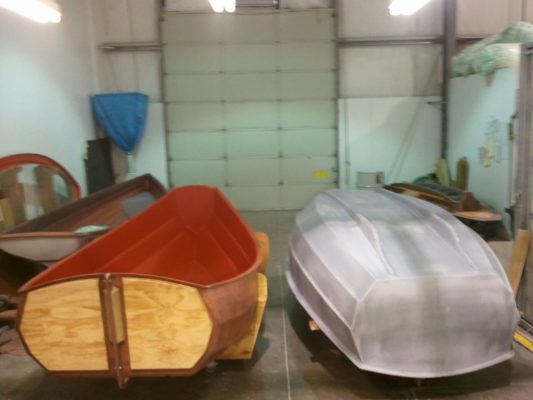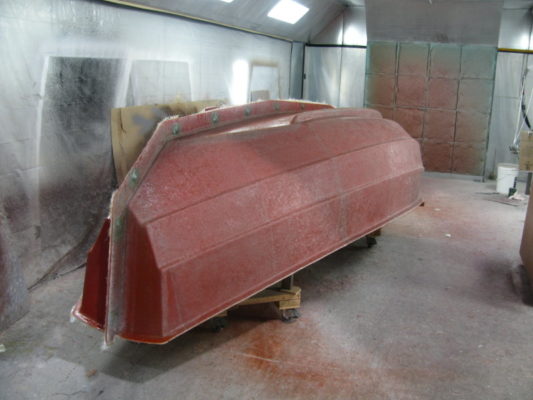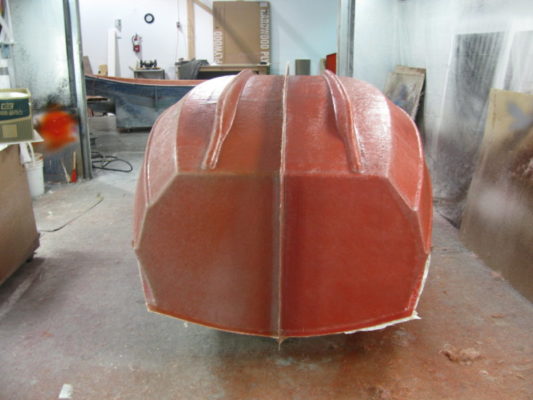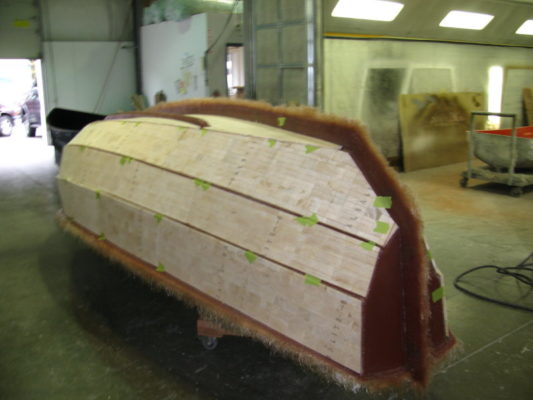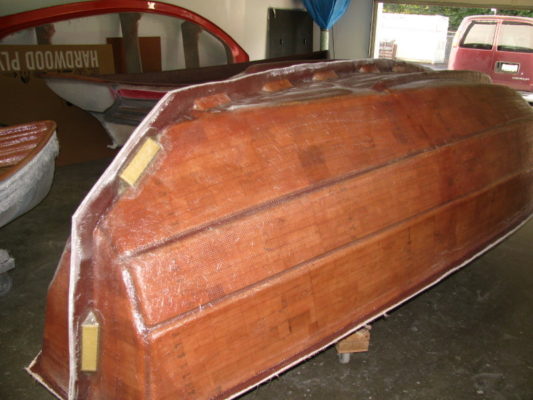Yeah, it has been over a month since the last update. But I have an excuse… I was sailing in the BVI … But never fear, Falk and the guys here were real busy in my absence and made great progress. The hull mold is FINISHED!
This first group of photos below shows the plug with the first ‘skin coats’ of gelcoat and fine layers of underlay fiberglass. These first layers need to be very precise, smooth and bubble free because and imperfection will show on the planking of every finished hull. There are actually 4 layers here, each of increasing thickness. #0514 best illustrates the ‘Mohawk’ haircut down the center of the mold; That’s where the seam is buried between the two mold halves. In subsequent pictures you can see how the Mohawk is trimmed, reinforced and the locator bolts installed. The locators are critical to aligning the two hull halves!
This next group of photos shows the layers of end grain balsa core bonded to the underlay fiberglass. The Balsa core prevents twisting and possible cupping of the planks as the mold goes through thermal shock during layup of the many hulls we hope will come from this mold. Each piece of balsa is hand fitted and individually bonded to the underlayment – as with the actual underlayment any bubbles can crop up even years later in the form of imperfections in the ‘glass boat.
This last batch shows the final mold ready t0 be separated to release the plug. This is the most nerve wracking time! Even though we have taken every precaution, in the back of everyone’s mind is ‘What if the mold sticks? Did we make the right calculations for release angles? Maybe ‘Murphy” forgot to wax a plank?”
But she came our perfect. The birth was easy with minimal anxiety once the procedure started. We removed the bolts, applied air pressure to the mold halves and out it came. The last two pictures are the mold and pug side by side.
I can see you guys now saying, “pretty, but why the orange color gelcoat in the mold?” Easy answer…. We specified a specialized top quality Vinylester gelcoat for the interior of the mold. The mold’s gelcoat lives a tough life. Not only does it have to absorb hundreds or thermal shocks with each lamination, it needs be tough enough to be able to take repeated wetsanding and take a high polish yet flexible to withstand the abuse of disassembly and removing parts. Mold quality vinylester resin comes in two colors, black and orange. We think Orange is nicer to look at and have had great success with it in our other molds, so Orange it is.
Next steps; We are letting the mold cure for a week before doing the final wetsand and polish for lamination of hull #1. By the end of next week hull #1 should be complete in the mold! But don’t get excited yet because that is the start of another involved procedure – creation of all the interior molds. We’ll be starting with the water ballast tank, seats, cockpit floor and associated bulkheads. Hull #1 will stay in the mold until the entire interior and deck structure is created to ensure uniformity and zero distortion.
We will simultaneously begin fabrication of the foils for the centerboard and rudder. Turnpoint Design just shipped us the master plugs for these parts so we can get a step ahead towards design of the centerboard trunk and figure out how that will relate to the seat and floor structure.
Another decision that is getting closer to reality is the choice of mast material. We and folks on the Scamp board wants a two piece mast for convenience, light weight, durability and minimal maintenance. Our 30 year experience with two piece Aluminum masts with zero failures makes Aluminum a favorite. We have also been investigating Carbon Fiber masts but the price point and fragility of Carbon tubes to side impact spooks me a bit.
As always, I’m glad to answer your questions or offer additional details.
Dave
